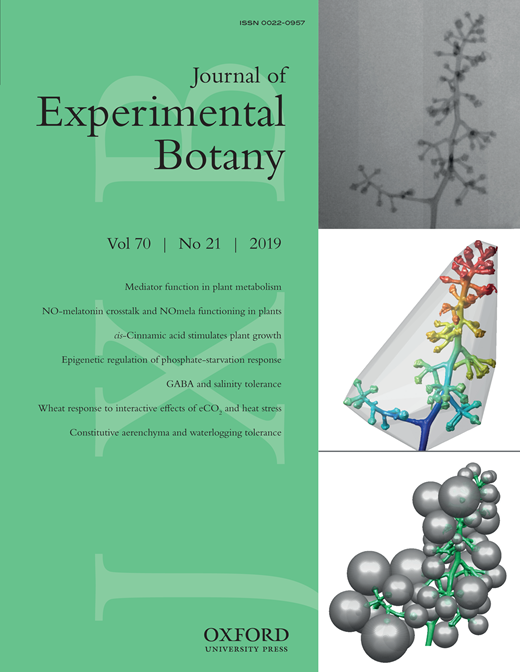Ver ítem
- xmlui.general.dspace_homeCentros Regionales y EEAsCentro Regional Patagonia NorteEEA BarilocheArtículos científicosxmlui.ArtifactBrowser.ItemViewer.trail
- Inicio
- Centros Regionales y EEAs
- Centro Regional Patagonia Norte
- EEA Bariloche
- Artículos científicos
- Ver ítem
Molecular bases of responses to abiotic stress in trees
Resumen
Trees are constantly exposed to climate fluctuations, which vary with both time and geographic location. Environmental changes that are outside of the physiological favorable range usually negatively affect plant performance and trigger responses to abiotic stress. Long-living trees in particular have evolved a wide spectrum of molecular mechanisms to coordinate growth and development under stressful conditions, thus minimizing fitness costs. The ongoing
[ver mas...]
Trees are constantly exposed to climate fluctuations, which vary with both time and geographic location. Environmental changes that are outside of the physiological favorable range usually negatively affect plant performance and trigger responses to abiotic stress. Long-living trees in particular have evolved a wide spectrum of molecular mechanisms to coordinate growth and development under stressful conditions, thus minimizing fitness costs. The ongoing development of techniques directed at quantifying abiotic stress has significantly increased our knowledge of physiological responses in woody plants. However, it is only within recent years that advances in next-generation sequencing and biochemical approaches have enabled us to begin to understand the complexity of the molecular systems that underlie these responses. Here, we review recent progress in our understanding of the molecular bases of drought
and temperature stresses in trees, with a focus on functional, transcriptomic, epigenetic, and population genomic studies. In addition, we highlight topics that will contribute to progress in our understanding of the plastic and adaptive responses of woody plants to drought and temperature in a context of global climate change.
[Cerrar]

Autor
Estravis Barcala, Maximiliano;
Mattera, María Gabriela;
Soliani, Carolina;
Bellora Pereyra, Nicolás;
Opgenoorth, Lars;
Heer, Katrin;
Arana, María Veronica;
Fuente
Journal of Experimental Botany 71 (13) : 3765–3779 (June 2020)
Fecha
2020-06
Editorial
Oxford University Press
ISSN
0022-0957
Formato
pdf
Tipo de documento
artículo
Palabras Claves
Derechos de acceso
Abierto
 Excepto donde se diga explicitamente, este item se publica bajo la siguiente descripción: Creative Commons Attribution-NonCommercial-ShareAlike 2.5 Unported (CC BY-NC-SA 2.5)
Excepto donde se diga explicitamente, este item se publica bajo la siguiente descripción: Creative Commons Attribution-NonCommercial-ShareAlike 2.5 Unported (CC BY-NC-SA 2.5)


